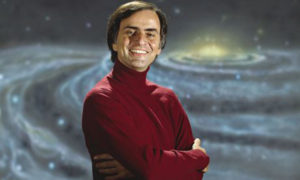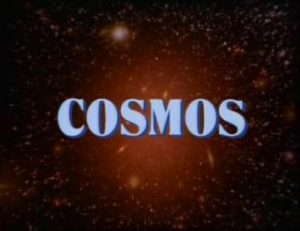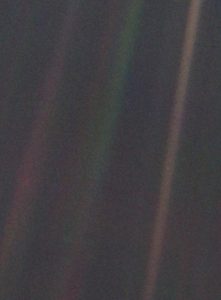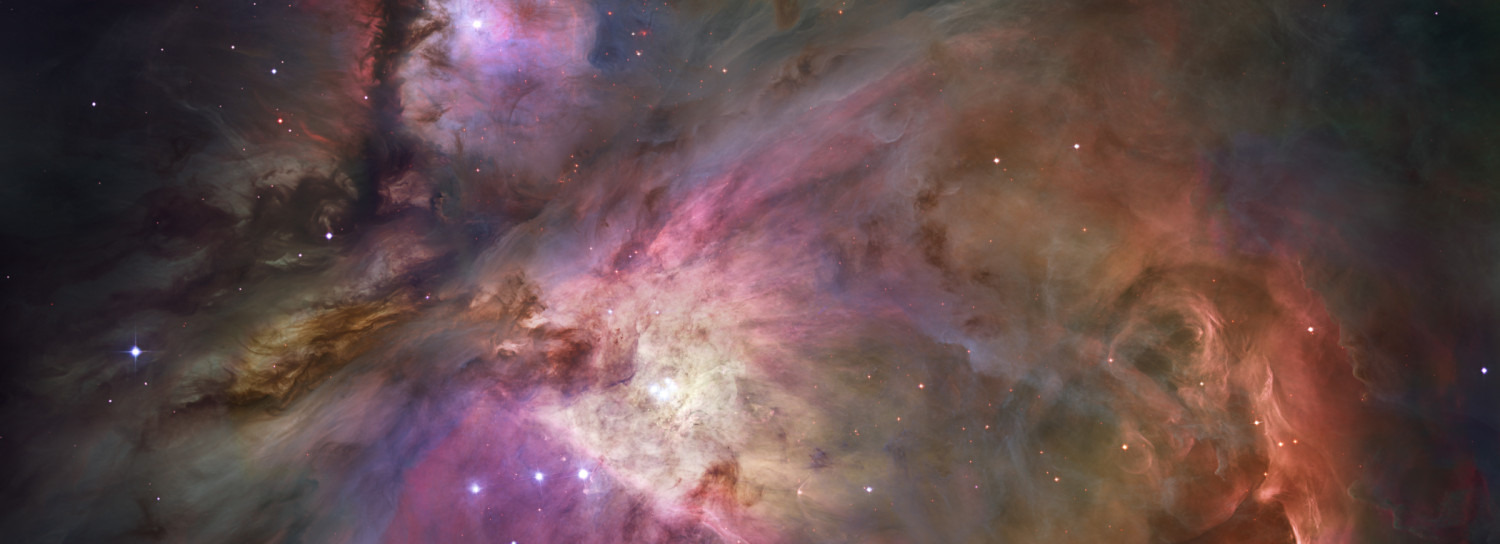
Twenty years ago today, Carl Sagan passed away from a cancer-related blood disease, myelodysplasia. If you know ANYTHING about twentieth century astrophysics, you know who Dr. Sagan was and what he did for our world.
Sagan was perhaps the most gifted communicator of scientific knowledge of our television age. Neil deGrasse Tyson has come close over the last decade or so, but Sagan was there at the very start of mass media consumption in the 70’s, 80’s and 90’s. No one did more to advance the cause of science, especially in the eyes of us here in the United States, than Dr. Sagan. He was a scientist and a poet, knowing exactly how to mix scientific language with words that the rest of us understood. His quotes are famous:
“Somewhere, something incredible is waiting to be known.”
“The universe seems neither benign nor hostile, merely indifferent.”
“Absence of evidence is not evidence of absence.”
“Imagination will often carry us to worlds that never were. But without it we go nowhere.”
“We live in a society exquisitely dependent on science and technology, in which hardly anyone knows anything about science and technology.”
“Our species needs, and deserves, a citizenry with minds wide awake and a basic understanding of how the world works.”
While Star Wars and Star Trek were introducing our generation to science fiction, Dr. Sagan was bringing the real life wonders of science, astronomy and the universe into our living rooms. His guest appearances on The Tonight Show with Johnny Carson are legendary. (https://www.youtube.com/watch?v=g-Q8aZoWqF0 and https://www.youtube.com/watch?v=G2CBSvZzw2Y). His astronomical hit, the 1980 PBS series “Cosmos”, transformed our basic understanding of, well, everything.

He had the advantage of reaching his height in an era that, despite the trauma of the 1960’s, still respected the scientific feats of greatness that had come out of that decade. The Apollo missions change our country and changed the world, and for a long time, we were hungry for more. Sagan helped parlay that thirst into the successful Viking missions to Mars, and also assisted with the Voyager Grand Tour missions. The Golden Record? Voyager’s message from Earth to any intelligence that might stumble across our probes in deep space millennia from now? That was Sagan. Dr. Sagan assumed that we would continue Apollo-era levels of spending and investment in space technology. If we had, we would most likely would have landed humans on Mars by the mid-1990’s. Sadly this was not to be. Today, we tend to take our vast capabilities for granted. We don’t want to know how something works as long as it does work. That tends to lead to a lack of respect for science and technology that had eroded our entire culture. This message was another of Sagan’s principle messages.
In late 1989, Sagan convinced NASA to have Voyager 1, by then long past its primary mission and sailing out of the Solar System, to turn it’s camera around and complete a family portrait by taking a photo of home. From 3.7 billion miles out, Voyager took one of the most famous and influential space photos ever imaged, the Pale Blue Dot.

Sagan’s collective work and influence was so vast that he has a dedicated collection at the Library of Congress. (http://www.planetary.org/blogs/guest-blogs/2016/1220-connecting-with-carl-sagan.html). Neil deGrasse Tyson paid homage to him in 2014 by working with Sagan’s former wife, Ann Druyan to produce and host an updated sequel to the original “Cosmos” that aired on Fox. deGrasse Tyson himself has considerable scientific chops and communications skills, and continues the work Sagan started to a modern audience. Reid Gower, a young Canadian YouTuber who independently produced video shorts on NASA, aired “The Sagan Series” in 2011. (https://www.youtube.com/playlist?list=PLF17F07CFC3208E29). An impressive collection of Sagan monologues set to top notch video, “The Sagan Series” is an incredible body of work.
If you have any respect for our world and our future, as well as science in general, you have likely read Sagan’s works in print. If you do not have such respect, they should be required reading. His film and narrative works are truly inspirational — there is a reason videographers continue to use narrations from his later books and excerpts from speeches and set them to moving works of art. Despite being written decades ago, they are just as timely, perhaps more so, given the world’s environmental and geopolitical challenges. Dr. Sagan never shied away from the harm that we as humans could inflict on our world and each other, but he never lost sight of our potential as a species either.
We are, here and now, the first species on our planet capable of saving our world from many forms of destruction, including from our own hands. We are also the first to be able to leave, to spread our wings and continue our heritage of exploration out into the Solar System and galaxy beyond. There are countless opportunities out there for us, for advancement of knowledge, for creation of free and equal societies, and yes, even for profit. Dr. Sagan always reminded us of this, of our potential legacy, and filled many of us with hope for a better future. His example is why, even though many of my own writings tend to be dark of late, pessimistic in the face of the seemingly dauntless challenges we face, I still do have a brightly shining light of hope in my heart. We have so much skill, and so much desire for learning and exploration, embedded deep in our DNA, that failure to survive this time seems like a distant possibility. Our ancestors set out across the world on foot, not always because they had to due to some scarcity of resources or competition from nearby tribes of fellow humans. Many times they started walking with the simply purpose of going somewhere new. To find somePLACE new. To learn someTHING new. If we merely follow in their footsteps, how can we fail?
Another of Carl Sagan’s quotes was “Extinction is the rule. Survival is the exception.” We have the power to BE THE EXCEPTION. The potential is still there. The drive is still within us. The future still belongs to all of us, only waiting for us to reach out and grasp with firm hands and a will bent to the purpose of crafting the next phase of human civilization.
